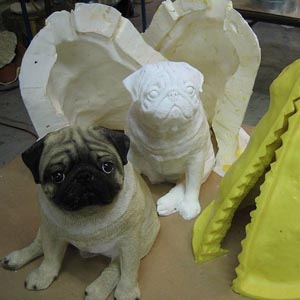You have no items in your shopping cart.
Helpful Tips for RTV Silicone Rubbers
 Storage stability
Storage stability
RTV silicone rubbers will remain in usable condition for at least 12 months, provided they have been stored cool and dry, in tightly closed containers. The catalysts have a shelf life of at least 6 months in closed containers, and should be protected from heat and moisture. All containers should be tightly re-sealed every time some of their components have been removed.
RTV silicone rubbers and the food regulations
Finished products made from addition-curing RTV silicone rubbers are suitable for food contact applications in compliance with the food regulations. As far as condensation-curing rubbers are concerned, these may be used only if they have been cured with the correct catalyst.
Preparation of components
All pourable components should be stirred thoroughly before use to ensure even distribution of the filler. Stirring also improves flow in higher viscosity systems.
Mixing of components
Even mixing of the rubber base and catalyst (in the case of condensation-curing rubbers) or the components A and B (in the case of addition-curing rubbers) is easily achieved for pourable and spreadable compounds, using a spatula. Larger batches are best mixed with a mechanical stirrer. Kneadable compounds can be mixed by hand, on the rolls or in a compounder, depending on the size of the batch.
Removal of entrapped air
To ensure bubble-free vulcanises, pourable mixes should be deaerated under vacuum. The catalysed mix is poured into a vessel so that it is no more than a quarter full. A vacuum of 10 - 20 mbar is then applied which initially causes the mix to rise, usually collapsing before the vessel's rim has been reached. If, however, there are signs that the mix will run over, a small amount of air is introduced and the process is repeated until the mix collapses. Evacuation is discontinued immediately afterwards, in other words the mix should under no circumstances be evacuated until no more bubbles form, since certain substances essential for vulcanisation to take place could escape under these conditions.
Application to the pattern
A thickening of the catalysed mix marks the start of vulcanisation. The material should be used well before the pot life has expired, i.e. whilst it is still in a free-flowing state which makes application that much easier. Every increase in temperature reduces the pot life. After evacuation, the mix is poured a thin stream, from a low height, on to the object of which a mould is to be made. The point where the stream hits the object should not be changed if possible.
If there are no possibilities of evacuating the mix, or if a spreadable compound is involved, a bubble-free mould surface can be achieved by first applying a thin coat of the catalysed mix to the pattern, using a stiff, short-bristled brush, allowing the RTV silicone rubber to partly vulcanise and, whilst it is still tacky, pouring the rest of the rubber on to the pattern in a thin stream, and from a great height until desired wall thickness has been attained. In the case of a spreadable compound, this may be applied with a brush or spatula.


